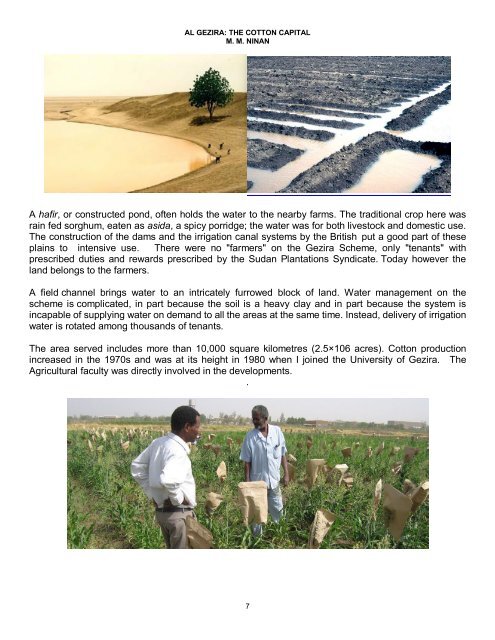You also want an ePaper? Increase the reach of your titles
YUMPU automatically turns print PDFs into web optimized ePapers that Google loves.
AL GEZIRA: THE COTTON CAPITAL<br />
M. M. NINAN<br />
A hafir, or constructed pond, often holds the water to the nearby farms. The traditional crop here was<br />
rain fed sorghum, eaten as asida, a spicy porridge; the water was for both livestock and domestic use.<br />
The construction of the dams and the irrigation canal systems by the British put a good part of these<br />
plains to intensive use. There were no "farmers" on the Gezira Scheme, only "tenants" with<br />
prescribed duties and rewards prescribed by the Sudan Plantations Syndicate. Today however the<br />
land belongs to the farmers.<br />
A field channel brings water to an intricately furrowed block of land. Water management on the<br />
scheme is complicated, in part because the soil is a heavy clay and in part because the system is<br />
incapable of supplying water on demand to all the areas at the same time. Instead, delivery of irrigation<br />
water is rotated among thousands of tenants.<br />
The area served includes more than 10,000 square kilometres (2.5×106 acres). Cotton production<br />
increased in the 1970s and was at its height in 1980 when I joined the University of Gezira. The<br />
Agricultural faculty was directly involved in the developments.<br />
.<br />
7


















